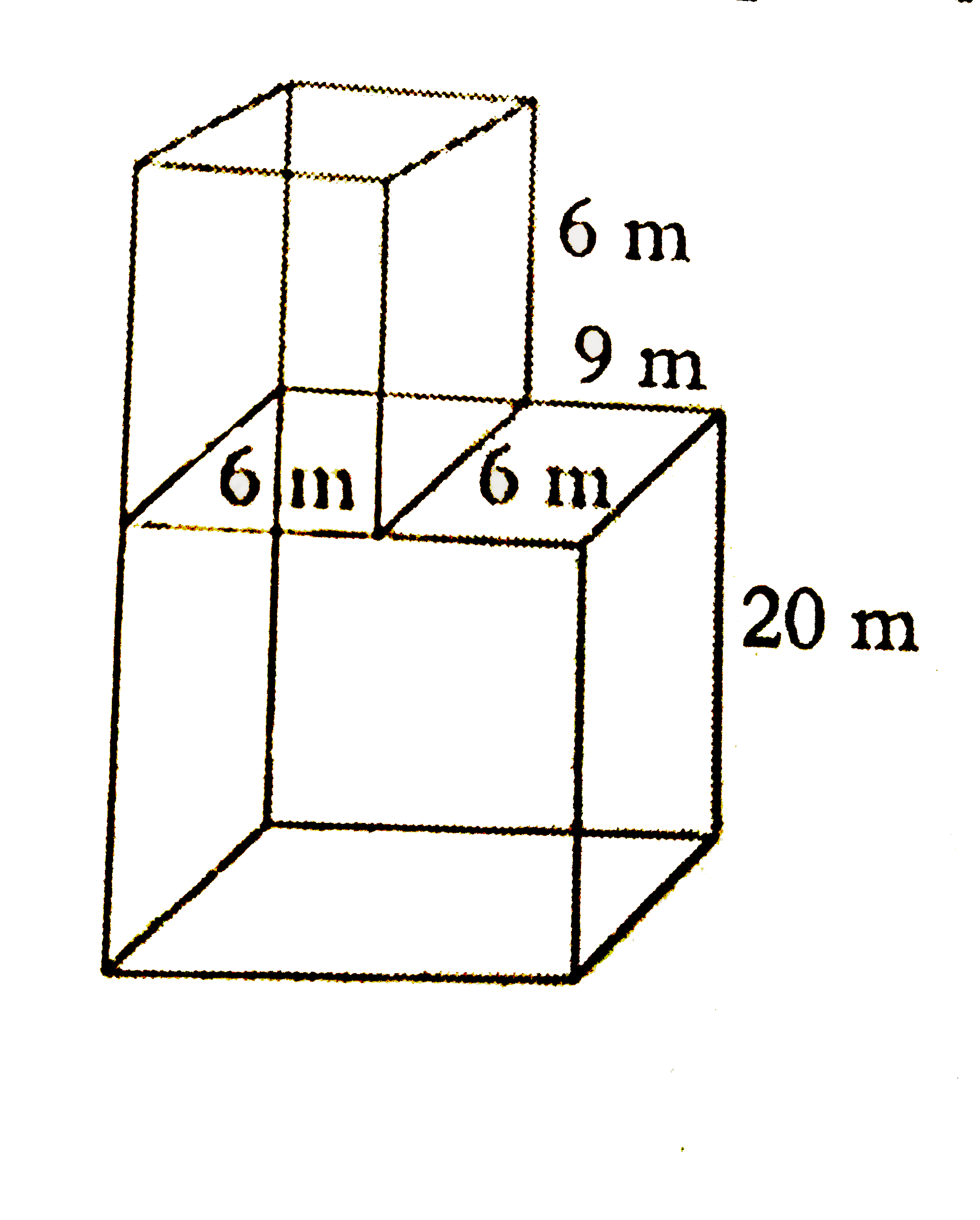A solid floats with (1/4)th of its volume above the surface of water. Calculate the density of the solid.
To solve the problem of finding the density of a solid that floats with 14 of its volume above the surface of water, we can follow these steps:
Step 1: Understand the Problem
When a solid floats, it displaces a volume of water equal to the weight of the solid. In this case, 14 of the solid's volume is above the water, which means 34 of its volume is submerged.
Step 2: Use the Principle of Buoyancy
According to Archimedes' principle, the weight of the water displaced by the submerged part of the solid is equal to the weight of the solid itself.
Let:
- V = total volume of the solid
- ρs = density of the solid
- ρw = density of water (approximately 1000kg/m3)
Step 3: Set Up the Equation
The weight of the solid can be expressed as:
Weight of solid=ρs⋅V⋅g
The weight of the water displaced (which is equal to the weight of the solid) can be expressed as:
Weight of displaced water=ρw⋅Vdisplaced⋅g
Since 34 of the solid's volume is submerged, we have:
Vdisplaced=34V
Thus, the weight of the displaced water becomes:
Weight of displaced water=ρw⋅(34V)⋅g
Step 4: Equate the Weights
Setting the weight of the solid equal to the weight of the displaced water:
ρs⋅V⋅g=ρw⋅(34V)⋅g
Step 5: Simplify the Equation
We can cancel g and V (assuming V≠0):
ρs=ρw⋅34
Step 6: Substitute the Density of Water
Substituting ρw=1000kg/m3:
ρs=1000⋅34=750kg/m3
Conclusion
The density of the solid is 750kg/m3.
---
When a solid floats, it displaces a volume of water equal to the weight of the solid. In this case, 14 of the solid's volume is above the water, which means 34 of its volume is submerged.
According to Archimedes' principle, the weight of the water displaced by the submerged part of the solid is equal to the weight of the solid itself.
- V = total volume of the solid
- ρs = density of the solid
- ρw = density of water (approximately 1000kg/m3)
The weight of the solid can be expressed as:
Weight of solid=ρs⋅V⋅g
The weight of the water displaced (which is equal to the weight of the solid) can be expressed as:
Weight of displaced water=ρw⋅Vdisplaced⋅g
Since 34 of the solid's volume is submerged, we have:
Vdisplaced=34V
Thus, the weight of the displaced water becomes:
Weight of displaced water=ρw⋅(34V)⋅g
Setting the weight of the solid equal to the weight of the displaced water:
ρs⋅V⋅g=ρw⋅(34V)⋅g
We can cancel g and V (assuming V≠0):
ρs=ρw⋅34
Substituting ρw=1000kg/m3:
ρs=1000⋅34=750kg/m3
The density of the solid is 750kg/m3.
Similar Questions
Knowledge Check
If a body floats with (m/n)th of its volume above the surface of water, then the relative density of the material of the body is
A(n−m)nBmnCnmD(n−m)nA body floats in water with one third of its volume above the surface of water if it is placed in oil it floats with half of its volume above the surface of the oil the specific gravity of the oil is
A(5/3)B(4/3)C(3/2)D1Two solids A and B float in water. It is observed that A floats with 12 of its body immersed in water and B floats with 14 of its volume above the water level. The ratio of the density of A to that of B is
A4:3B2:3C3:4D1:2
A log of wood floats in water with 15 of its volume above the surface. What is the density of wood?
View SolutionA solid body floating in water has 14th of the volume above surface of water. What fraction of its volume will project upward if it floats in a liquid of specific gravity 1.1 ?
View SolutionA solid body floating in water has 1/5th of its volume above surface of water. What fraction of its volume will project upwards if it floats in a liquid of specific gravity 1.3?
View SolutionA cylindrical body floats in water such that one-fourth of its volume lies above the surface of water. Find the density of the meterial with which the body is made of.
View SolutionA body is floating in water with 3/5th of its volume below the water surface. What will be density of the body?
View Solution

